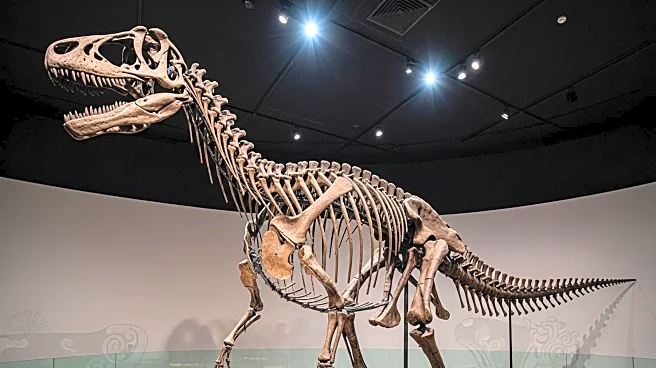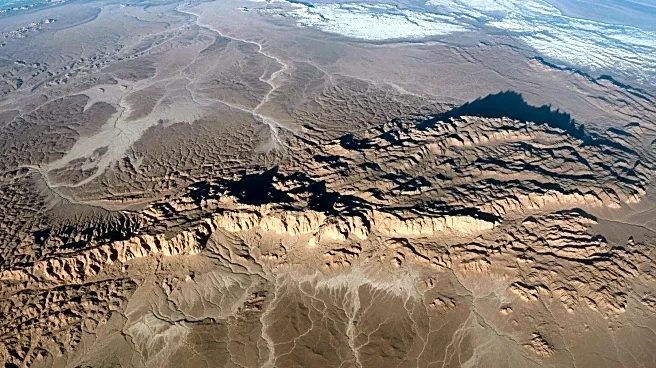What's Happening?
A new study published in Science Advances has revisited the Messinian Salinity Crisis, a significant geological event that occurred between 5.97 and 5.33 million years ago. During this period, the Mediterranean Sea was nearly cut off from the Atlantic Ocean, leading to dramatic changes in sea levels. The study suggests that river erosion and climate factors contributed to these fluctuations, with erosional waves through the Bosphorus and Aegean outlets lowering the Paratethys lakes and transferring water into the Mediterranean. This influx of freshwater raised the sea level by more than a kilometer, explaining the widespread Lago-Mare deposits found along Mediterranean margins.
Why It's Important?
Understanding the Messinian Salinity Crisis provides valuable insights into historical climate change and geological processes. The study's findings can inform current climate models and help predict future changes in sea levels and their impact on coastal regions. This research is crucial for scientists and policymakers as they address contemporary environmental challenges, including rising sea levels and their implications for human populations and ecosystems.
What's Next?
Further research may focus on refining models of historical sea-level changes and their causes, potentially leading to more accurate predictions of future climate scenarios. Scientists may also explore the broader implications of these findings for understanding Earth's geological history and its influence on current environmental conditions.
Beyond the Headlines
The study highlights the interconnectedness of geological and climatic factors in shaping Earth's history. It underscores the importance of interdisciplinary research in uncovering complex environmental processes and their long-term effects. Additionally, the findings may contribute to discussions on sustainable management of coastal areas in light of potential future sea-level changes.











